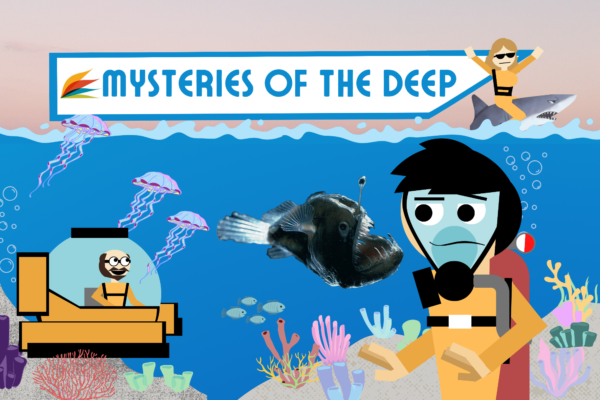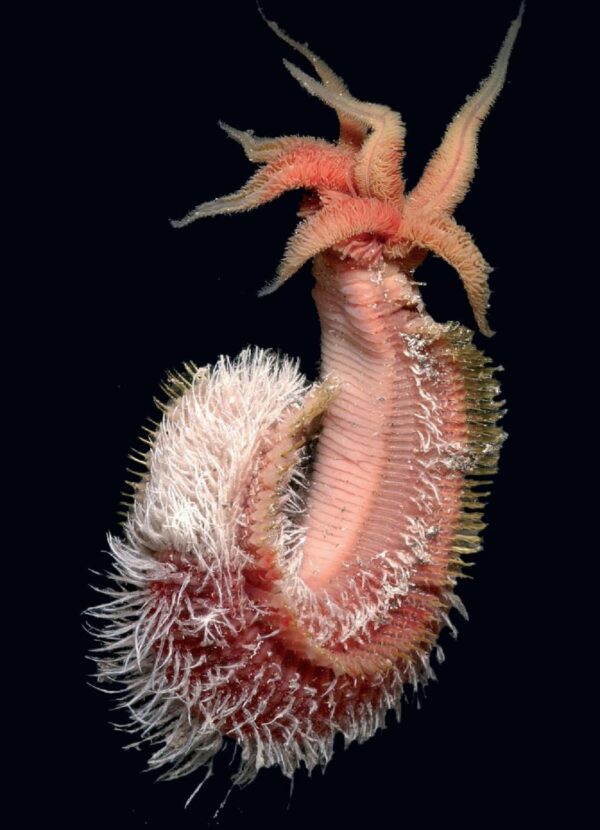
When you go to the beach, have you ever looked down at the water and wondered, “What’s down there?” The ocean is huge. As in MASSIVELY HUGE. According to the Intergovernmental Oceanographic Commission of the United Nations Educational, Scientific, and Cultural Organization (UNESCO), only 5% of the ocean has been explored and charted by humans.
In our last blog, we talked about the not-very-bat-creature-like Vampire Squid and the ancient (but not really) Nautilus. This month, we’re going to be diving a bit deeper into the lowest parts of the ocean, where you’ll find creatures that can survive in the most extreme environments.
The scariest thing about the ocean is not knowing what’s hiding in it. Hopefully, the things you learn in this series will shine some light on the abyss and help you be a little less scared of the watery parts of our planet.
…or will it?
The Pompeii Worm

Named after the ancient Roman city that was destroyed by Mount Vesuvius, this seemingly simple worm is found by some of the (appropriately) hottest places in the world! They are normally found around the East Pacific Rise (around 2,500 meters deep).
Here are three facts about these strange, wiggly wanderers:
The Volcano Snail

Continuing on our heat-proof theme, the next animal on our list is the scaly-foot gastropod, or simply known as the volcano snail! Appropriately named (considering its habitat), the volcano snail is found around 2800 meters deep in the ocean, similar to the Pompeii worm. However, there’s something a bit different about these snails compared to their land-dwelling cousins.
Here are three facts about these scaly sea critters:
These animals really took “out of the frying pan and into the hydrothermal vent” very seriously! If you’re interested in learning more about these sea creatures (and other animals you may be curious about), visit the library and check out some books from our non-fiction section! Then, check out our Gale Online Database, where you can learn even more. Hopefully, your knowledge of the deep grows as big as our little armored friend!
Stay tuned next time for the next two animals in the series!





